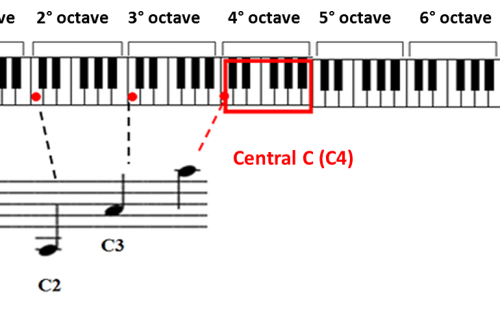
Harmonic Major. Melodic Major.
Contents
What other popular sound sequences exist that can give music a special character?
You have studied the major scale and you know that you can build it from any step, the main thing is to observe the correct intervals between the steps. Let’s say more: by changing the intervals between steps, you will change the mode itself. Those. no matter how many types of modes exist, each of them will have its own well-defined set of intervals. It seems to be something like this: take and use instead of, for example, a large second – a small one? But no! On the sound, even better to say the “mood” of the work, such changes affect extremely strongly. Just as artists have a huge palette of colors, musicians have a huge range of frets.
Starting with this chapter, we will tell you about the existing frets, their “flavor”, where and how they are usually used. So, let’s begin:
Harmonic major
The major mode, in which the VI step is lowered, is called harmonic . Note that step VII remains in its place, which automatically increases the interval between steps VI and VII (this is logical: if Vasya, who is between Katya and Masha, goes to Masha, he simultaneously leaves Katya).
So what does lowering the VI degree by half a tone give? This increases the attraction of the VI stage to the V stage. By ear, a slight shade of the minor begins to be caught. And it’s in a major key!
The figure below shows the harmonic C major:

Figure 1. Harmonic C Major
Listen to this example. You will hear that dropping one step is enough for a noticeable difference from the major scale. We highlighted the lower steps in red (A-flat). The gravitation of the VI degree to the V degree is clearly audible in the second measure, because notes follow each other. Try to hear this attraction.
In general, you should try to understand the articles in the “Chord Theory” section by ear, be sure to study sound examples. If you still need to memorize something, understand it with your head in the “Notation Writing” section, then now you already need to hear exactly what we are analyzing. Therefore, we highly recommend listening to the included audio samples. At the time of this writing, examples in the mid format were posted on the site. For a better sound, we plan to still use real sounds, which we will do in the near future.
We digress a little, we return to the harmonic major. Consider the intervals used: all intervals are seconds. The order is as follows: b.2, b.2, m.2, b.2, m.2 , SW.2 , m2. Changed intervals are highlighted in bold.
melodic major
When moving up, this variety sounds like a natural major, but when moving down, two steps are lowered: VI and VII. The sound is very close to minor. The melodic major is applied , usually when the melody moves in a downward direction.
If the harmonic major is used quite widely, especially in classical music, then the melodic major is used much less frequently.
This is what melodic C major looks like:

Figure 2. Melodic C major
We highlighted the lower steps in red. Listen, try to catch the minor tone in the sound of the sound fragment. Pay attention to the confident movement of the melody down to the tonic.
Results
You have become familiar with two types of major scale: harmonic major and melodic major . If you didn’t catch the nuances of the sound by ear, don’t be discouraged – it will come with time.





